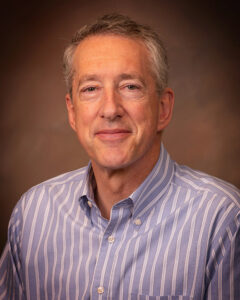 As a boy, Scott Pessetto would go camping with his parents in the mountains near their Bountiful, Utah home. Under the stars, the magic would begin. A seemingly ordinary hunk of wood and the red tip of a matchstick would transform into light and heat. Gray powder wrapped up in a paper tube would take flight and summon a colorful shower of sparks.
As a boy, Scott Pessetto would go camping with his parents in the mountains near their Bountiful, Utah home. Under the stars, the magic would begin. A seemingly ordinary hunk of wood and the red tip of a matchstick would transform into light and heat. Gray powder wrapped up in a paper tube would take flight and summon a colorful shower of sparks.
Energy, it seemed, was hiding within everything; Pessetto was fascinated by all the different ways it could be unleashed.
Pessetto’s high school chemistry teacher — Mr. Nelson — encouraged him to pursue the science behind that magic. A scholarship from the University of Utah helped Pessetto to pursue a bachelor’s in chemical engineering while living at home and working a part-time job.
Now, Pessetto is the new president of the Price college’s Engineering Alumni Association (EAA). After serving on the board for the past five years, including the most recent year as its Vice President, he is redoubling his commitment to his alma mater.
“I want the next generation of engineers to have greater opportunities than I did,” Pessetto says. “Especially when it comes to energy research, we need them more than ever.”
After graduating in 1982, Pessetto immediately began a career with ConocoPhillips that, over the next three-and-half decades, would take him to increasingly remote corners of the earth. At the time, oil and natural gas were still the planet’s preeminent energy sources, but their availability was beginning to dwindle. Chemical engineers like Pessetto were necessary for the complicated task of extracting it from new and ever-more-challenging places.
The same magic that fascinated Pessetto as a child was present in those oil and gas fields, but now the trick was to keep it safely contained. His training at the U — in multiple branches of chemistry, as well as heat transfer, thermodynamics, and fluid mechanics — enabled him to sketch out designs for these facilities, and then to manage the interdisciplinary teams that would design and build them.
“Everything you need to know to build these facilities and transfer the products safely comes down to keeping oxygen, and a spark away from the hydrocarbons,” says Pessetto, “the skills I learned at the U also allowed me to work with people and get results.”
Pessetto’s final posting was the Greater Kuparuk Area on Alaska’s northern coast within the Arctic circle; after a decade in one of the most isolated places on the globe, it was time to return home. In addition to his extended family and the mountains that inspired his childhood love of the natural world, Utah presented an opportunity to repay the opportunities that first sent him on this adventure.
“My time on the EAA board has been rewarding,” Pessetto says, “Beyond helping students with the kind of scholarship I received, we also make sure they have access to the tools and resources that will launch their careers. We also go out to high schools with STEM education programs, getting students excited about these fields at even earlier ages.”
And while chemical engineering and energy research looks radically different from when he was a student, Pessetto sees his new EAA role as a way of embracing that change.
Upon his return to Salt Lake City, he noted that the winter inversion due in part to gasoline burning vehicles remained. After a career in the fossil fuel industry, he now owns an electric car and powers it — along with the rest of his home — with solar panels.
“The world is evolving, so we have to be flexible,” Pessetto says, “The time to transition away from hydrocarbons is now, and the next generation of students are going to be the ones that make these panels even more efficient, or the batteries in these cars even lighter. They’re the ones who are going to make those discoveries and take us to the next level.”